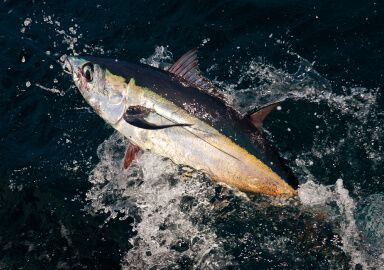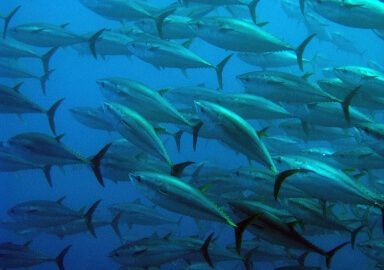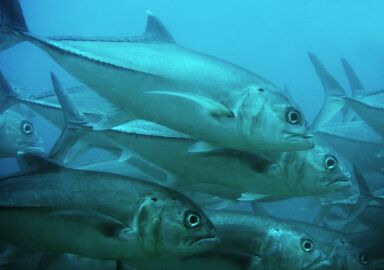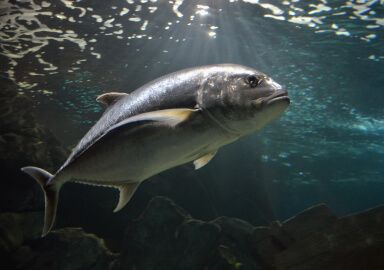Bluefin Tuna
Bluefin tuna can grow extremely large and, as apex predators, are possibly the most prized sport and commercial fish species in the world.
View 52 listings
52
listings
–
price starting from
17
countries
–
to the nearest trip
Where and When?
Atlantic bluefin tuna are distributed throughout much of the Atlantic Ocean as well as the Mediterranean Sea and there are sport fisheries on both sides of the Atlantic Ocean in Europe and North America. Along the North American eastern seaboard there are many operators from Nova Scotia in the north toFlorida and Texas in the south. Pacific bluefin tuna are found throughout much of the northern Pacific Ocean with the main sport fishing area being along the Californian coast but Pacific bluefin tuna are also caught from countries such as Australia and New Zealand. The southern bluefin tuna is distributed around the world in the southern areas, but well north of the Antarctic seas, and now supports an important sport fishery in Australia.
All bluefin tuna are highly migratory and so it is essential to keep track, through local knowledge, of when bluefin tuna are present and how to catch them in any specific area. All species are under very heavy fishing pressure and many countries have restricted seasons and firm catch limits. Bluefin tuna may be caught during the day or night and, as it has extremely good eyesight, better catches can often be made, and larger fish may be landed, at night when heavier tackle can be used.
About Bluefin Tuna
There are three bluefin tuna species, the Atlantic bluefin Thunnus thynnus, the Pacific bluefin Thunnus orientalis and the southern species Thunnus maccoyii. Atlantic bluefin tuna are the largest tuna and can grow to sizes competing closely with monster species like the fabled blue marlin. Large specimens, about 2 to 2.5 metres long (6 ft. 7 in. to 9 ft. 3 in.), can be about 15 years old but the species may live for 50 years, attain a length of 3.7 meters (12 ft.) with a maximum recorded mass of 680 kilograms (1 500lbs.). The Pacific bluefin tuna is not quite as large, with a maximum length of 3 meters (9 ft. 10 in.) and mass of about 450 kilograms (992 lbs), while the southern bluefin tuna can reach a length of 2.5 meters (9 ft. 3 in.) and mass of about 260 kilograms (573 lbs.).
All bluefin tuna are dark blue above and much lighter below with bright yellow caudal fins. Their mouths and eyes are large and, unlike many other tunas, their pectoral fins are short. They all migrate tremendous distances across their ranges to spawn in specific areas such as parts of the Gulf of Mexico and near the Balearic Islands in the Mediterranean Sea for the Atlantic species. They eat mostly fish but also feed on squid and crustaceans when the opportunity arises.
How to Catch?
Virtually all bluefin tuna fishing, except for limited kite fishing in places like parts of Florida, is carried out from boats. Fortunately, sport fishing charter boats proliferate at many localities, almost all along the east coast of North America, west coast of Europe some of California and countries like Australia. Due to past overfishing in some areas bluefin tuna are much less abundant and generally smaller than in the past. There are many “tricks” to hooking and landing bluefin tuna but the “bottom line” is to use strong, well maintained, reliable heavy tackle and, if bait fishing, make sure the bait is as fresh as possible. Among the commonest methods used are surface trolling various baits and deep fishing using live bait, dead natural bait and artificial lures and jigs. The most important aspect is, however, before you leave the dock, to obtain the knowledge of how to play, and not lose, what could be the fish of a lifetime.

















